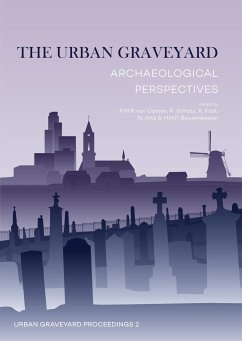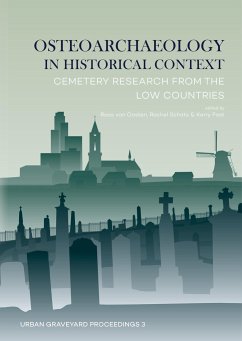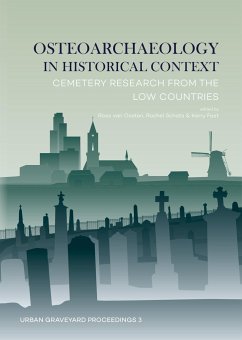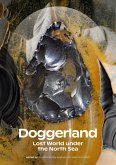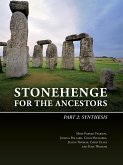It is commonly believed that in medieval and post-medieval towns and cities death outnumbered births and that these urban centres could only survive through the influx of migrants; a concept which has come to be known as the urban graveyard effect. Whether this was indeed the case for all cities and towns is still debated, but it is certain that urban citizens were more used to death that we are today. The medieval graveyards in which the deceased were interred, then still located within town limits, are an invaluable source of knowledge for reconstructing past lives. Systematic archaeological and osteoarchaeological research of urban graveyards has become the norm in the Netherlands and Belgium since the 1980s. However, many of the studies remain unpublished and larger, overarching publications in which comparisons are made between different studies are still lacking.The urban graveyard presents several studies in which the results of older archaeological and osteoarchaeologicalresearch are compared to more recent excavation data from several Dutch, Belgian and Danish cities and towns. Both the archaeological data concerning burial position, orientation, and grave goods as well as osteoarchaeological data such as demographic information and pathological observations are discussed. This well-illustrated volume is a starting point and source of inspiration for more (inter)national comparative research. Contents1. Preface - Roos van Oosten & Rachel Schats2. Ethical issues in human osteoarchaeology: Recommendations for best practice in the Netherlands - Andrea L. Waters-Rist, Rachel Schats & Menno L.P. Hoogland3. Rural cemeteries, cult places and community identities in the Central Middle Ages in the Kempen region (southern Netherlands) - Frans Theuws4. Social differences in burial practices in the medieval cemetery of Reusel: An osteoarchaeological and mortuary archaeological study of burial practices in the southern Netherlands during the Central Middle Ages - Catelijne Nater 5. Buried in Alkmaar: Historical and archaeological research on urban cemeteries - Peter Bitter6. Medieval and postmedieval cemeteries in and around the city of Delft: Thirty years of rescue archaeology - Epko J. Bult7. A thousand graves: differences and similarities between archaeologically investigated burial grounds in 's-Hertogenbosch, the Netherlands (c. 1275-1858) - Ronald van Genabeek8. In the shadow of St. Plechelmus: A thousand years of burials - Gavin Williams9. St. Rombout's cemetery in Mechelen, Belgium (10th-18th century AD): A typical urban churchyard? - Katrien Van de Vijver, Frank Kinnaer & Silvia Depuydt10. The Carmelite monastery in Aalst, Belgium, province of East Flanders (1497-1797): An urban burial ground in a monastic environment - Koen De Groote, Jan Moens & Kim Quintelier11. Taking stock of burial archaeology: An emerging discipline in Denmark - Lene Høst-Madsen 12. A rural view of early modern mortuary practices: Context and materialculture of the eighteenth- and nineteenth-century cemetery of Middenbeemster, the Netherlands - Frank J. van Spelde & Menno L.P. Hoogland AbstractsAbout the contributors
Hinweis: Dieser Artikel kann nur an eine deutsche Lieferadresse ausgeliefert werden.
Hinweis: Dieser Artikel kann nur an eine deutsche Lieferadresse ausgeliefert werden.

